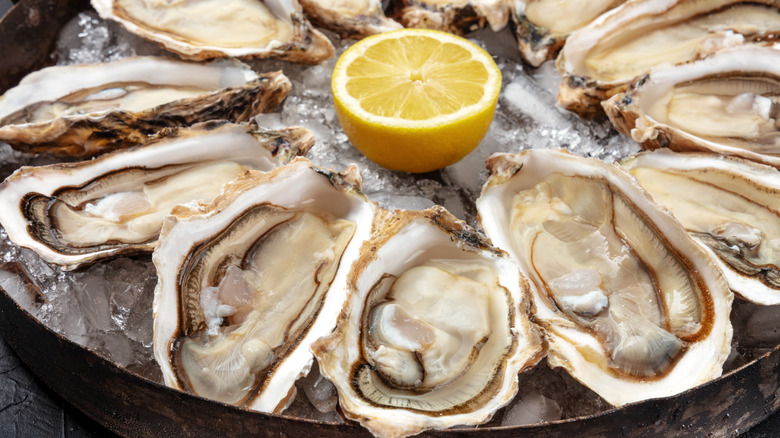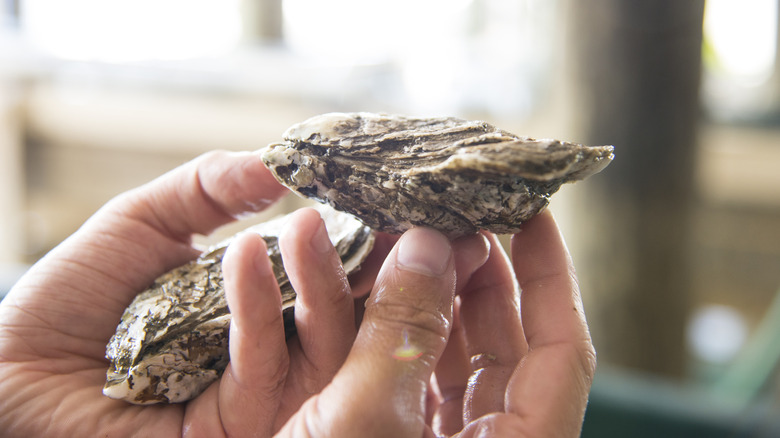Prefer A Meatier Oyster? You Should Be Asking For This Type
Foodies may make a big deal about preferring wild-caught seafood over farmed, and in some cases, such as with wild-caught salmon, it may actually be of better quality (and have a hefty price tag that reflects this). When it comes to oysters, however, farm-raised ones are often superior. Not only are they okay to eat even in months without an "R," but they are grown in cleaner waters, tend to be larger, and can have more of that classic oyster shape you expect. One way that oyster farmers improve the appearance of the shell is to tumble the oysters. Stephen Mandracchia, who directs culinary operations at the New York City campus of the Institute of Culinary Education, explained the what and the why for us: "Tumbling is a process where oyster farmers run the growing oysters through a barrel tumbler every so often. This breaks up the growing lip of the shell and forces the oyster to grow in a more cup-like shape."
In the Instagram age, oyster aesthetics may well play a significant role in how well they sell, but the main reason for tumbling oysters isn't just making them look better. According to Mandracchia, "Tumbling forces the oyster to create a more cup-shaped, cleaner and stronger shell with full meat and less room for liquor." If you can find the word "tumbled" on the packaging (or in the description if you're buying your shellfish online), chances are you're looking at much meatier oysters than you'd get if you went with wild-caught ones.
There are two main methods of tumbling
Stephen Mandracchia spoke of oysters being tumbled in a barrel, and indeed, this was the original method that was used. The very first tumbled oysters on the market were Kusshis from British Columbia. Eventually, however, oyster farmers found fault with the new method. As per Mandracchia, "Barrel tumbling is a labor-intensive and expensive process." Anything that adds to the price isn't great, considering that all oysters tend to be quite pricey. Fortunately, Australian oyster farmers came up with a cheaper, easier way of achieving the same results: tide tumbling. Mandracchia said of this alternative process, "The oysters are placed in bags attached to a line a few feet above the high tide line and attached to floats that go up and down with the rising and falling of the tide." Some tide-tumbled varieties include Chelsea Gems, Shibumis, and Shigokus.
So, are tide-tumbled or barrel-tumbled oysters better? If you're not an oyster farmer, the answer is, they're probably about the same. Mandracchia said, "The difference is purely in the way they are tumbled. Tide tumbling is a gentler way to break down the shell, while machine tumbling is a bit more aggressive, [but] both achieve the same results." Tide tumbling may be somewhat slower, however, as it can take a few years for the oysters to achieve the proper plump shape desirable for commercial purposes.

